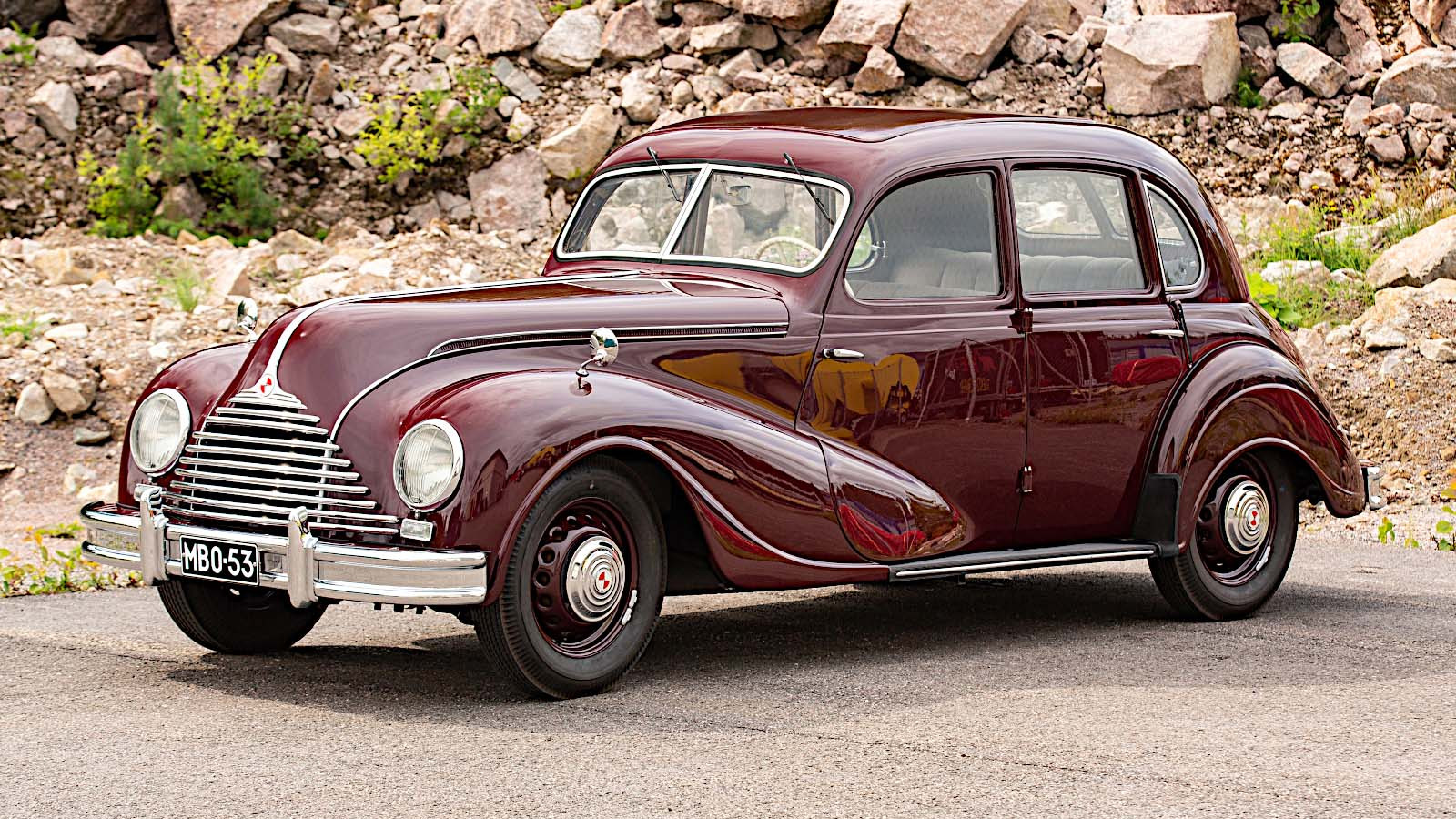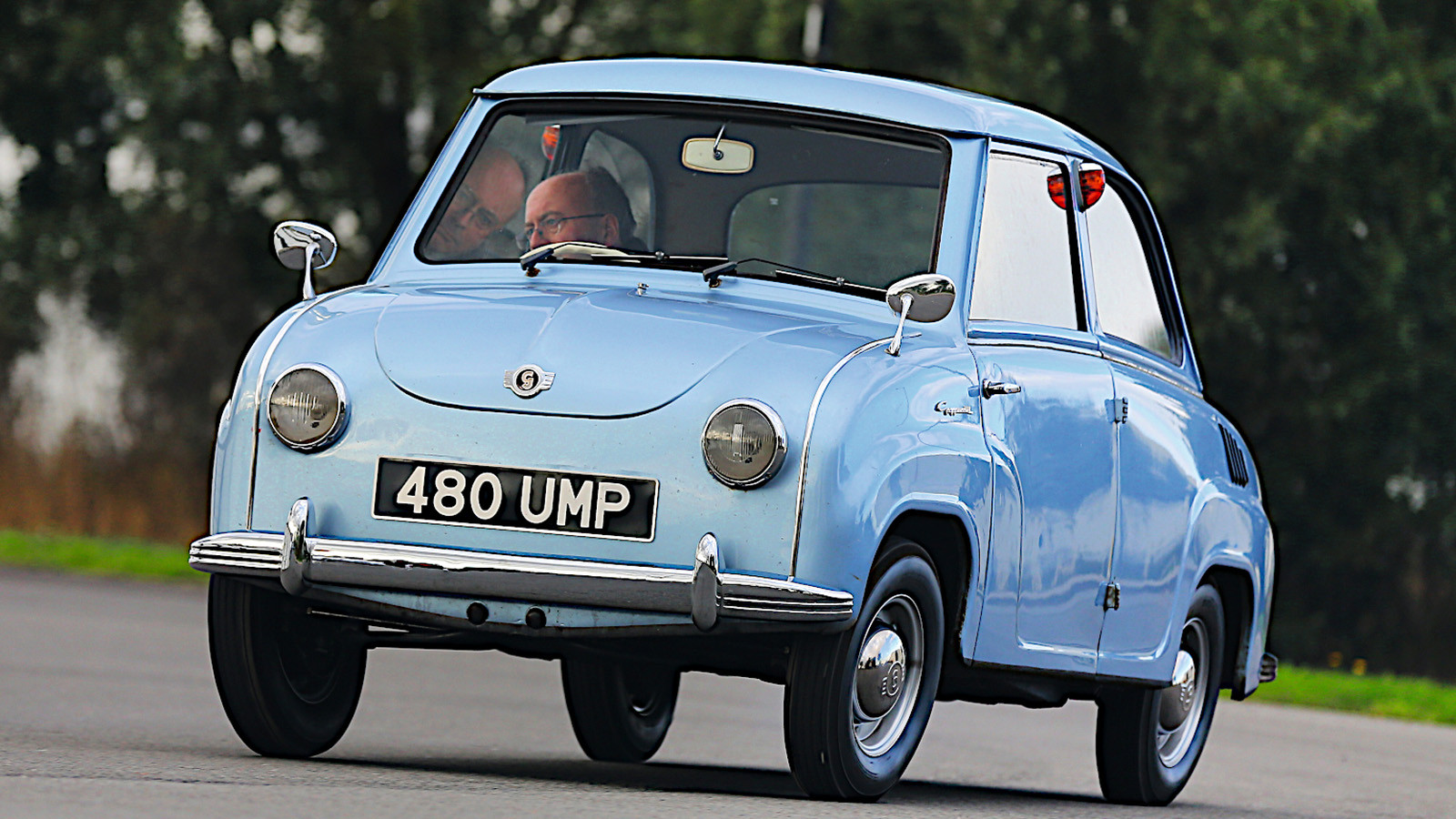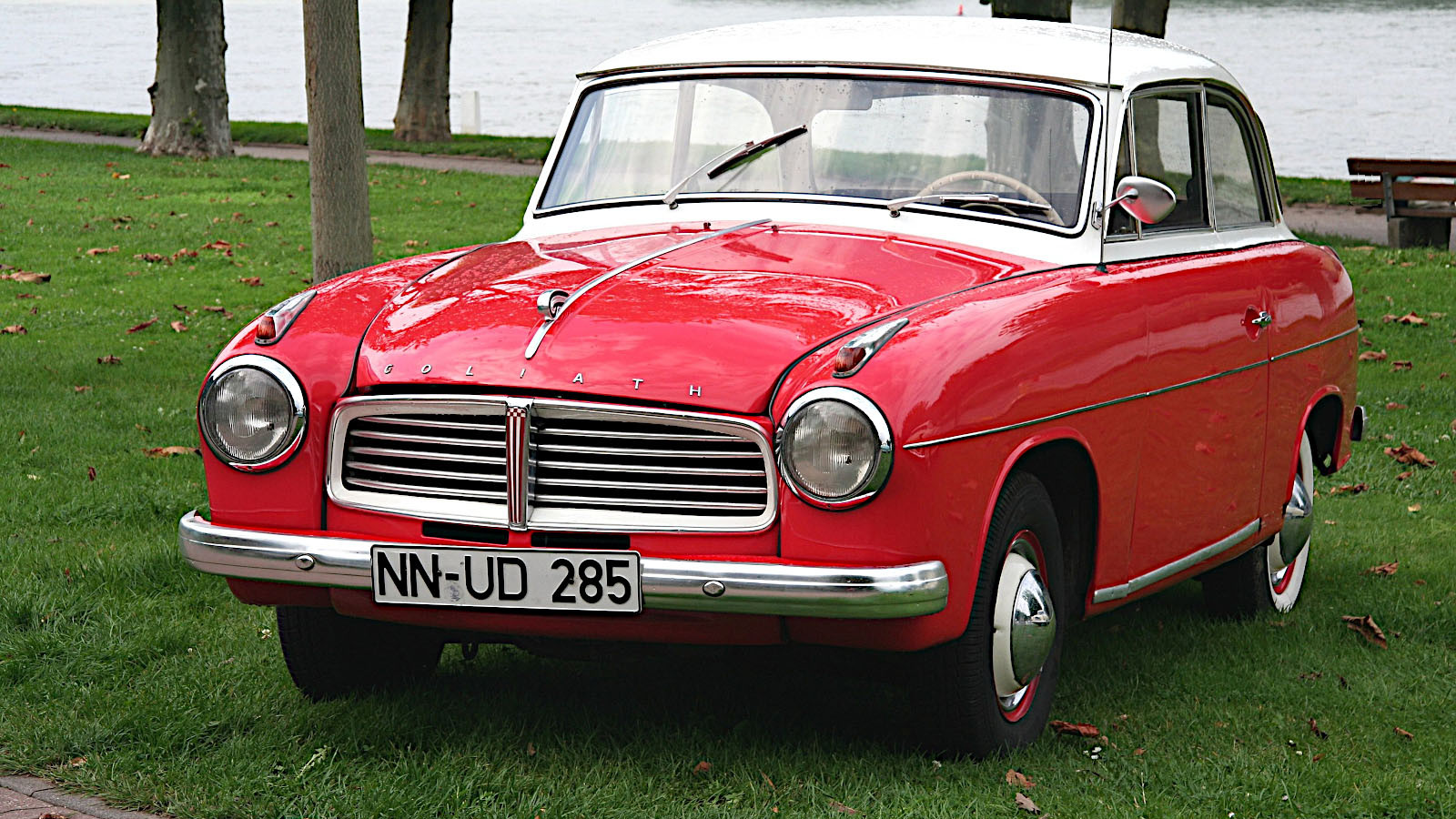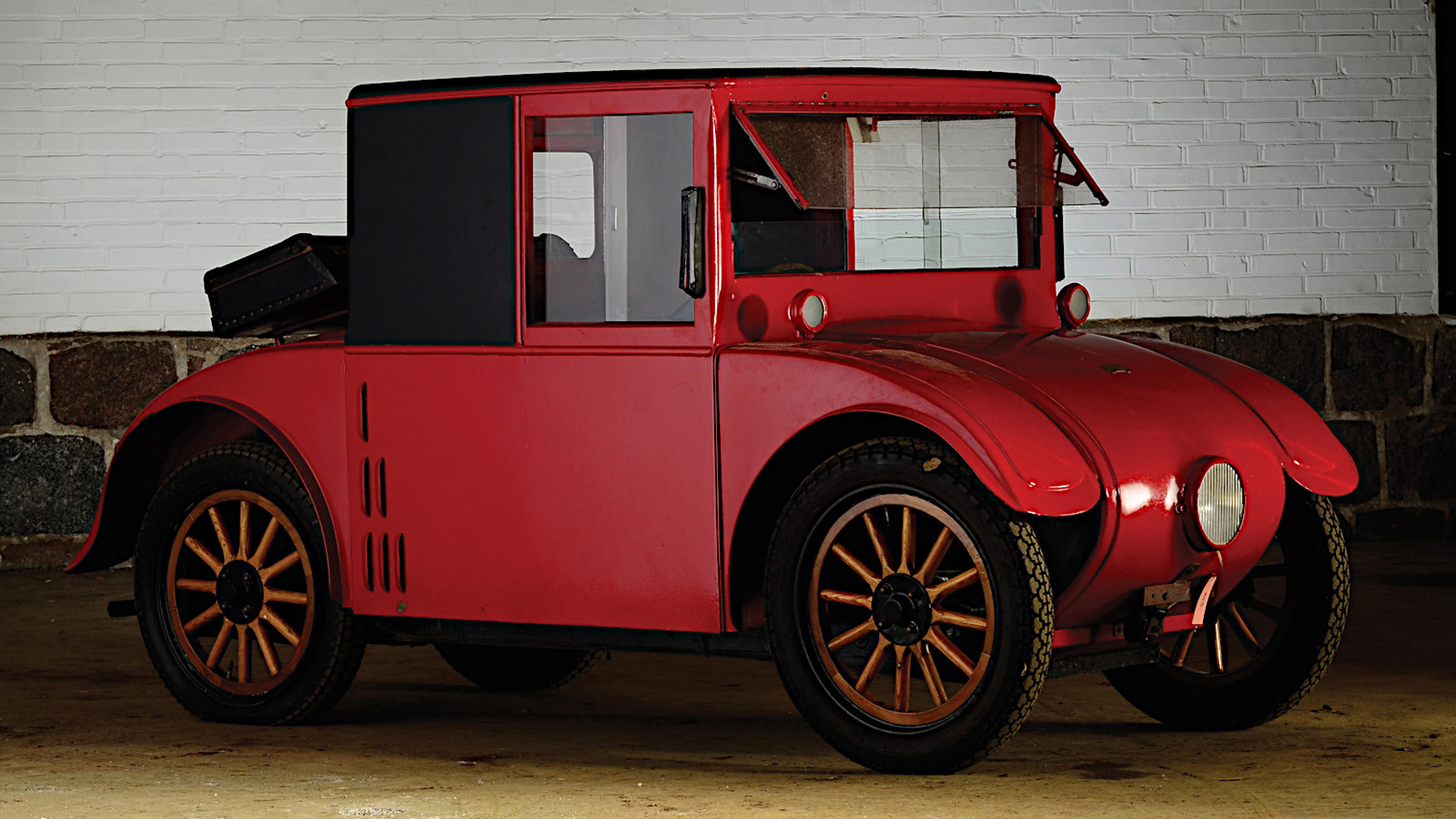-
 © Tony Baker/Classic & Sports Car
© Tony Baker/Classic & Sports Car -
 © Bonhams|Cars
© Bonhams|Cars -
 © Tony Baker/Classic & Sports Car
© Tony Baker/Classic & Sports Car -
 © RM Sotheby’s
© RM Sotheby’s -
 © Torsten Maue/Creative Commons licence https://creativecommons.org/licenses/by/2.0/legalcode.en
© Torsten Maue/Creative Commons licence https://creativecommons.org/licenses/by/2.0/legalcode.en -
 © Tony Baker/Classic & Sports Car
© Tony Baker/Classic & Sports Car -
 © RM Sotheby’s
© RM Sotheby’s -
 © ChiemseeMan/Public domain
© ChiemseeMan/Public domain -
 © RM Sotheby’s
© RM Sotheby’s -
 © Audi
© Audi -
 © RM Sotheby’s
© RM Sotheby’s -
 © DTM Champion/Creative Commons licence https://creativecommons.org/licenses/by-sa/4.0/legalcode.en
© DTM Champion/Creative Commons licence https://creativecommons.org/licenses/by-sa/4.0/legalcode.en -
 © RM Sotheby’s
© RM Sotheby’s -
 © James Mann/Classic & Sports Car
© James Mann/Classic & Sports Car -
 © Julian Mackie/Classic & Sports Car
© Julian Mackie/Classic & Sports Car -
 © Lothar Spurzem/Creative Commons licence https://creativecommons.org/licenses/by-sa/2.0/de/legalcode.de
© Lothar Spurzem/Creative Commons licence https://creativecommons.org/licenses/by-sa/2.0/de/legalcode.de -
 © RM Sotheby’s
© RM Sotheby’s -
 © German Federal Archives/Creative Commons licence https://creativecommons.org/licenses/by-sa/3.0/de/legalcode.de
© German Federal Archives/Creative Commons licence https://creativecommons.org/licenses/by-sa/3.0/de/legalcode.de -
 © RM Sotheby’s
© RM Sotheby’s -
 © RM Sotheby’s
© RM Sotheby’s -
 © Lothar Spurzem/Creative Commons licence https://creativecommons.org/licenses/by-sa/2.0/de/legalcode.de
© Lothar Spurzem/Creative Commons licence https://creativecommons.org/licenses/by-sa/2.0/de/legalcode.de -
 © Torsten Maue/Creative Commons licence https://creativecommons.org/licenses/by/2.0/legalcode.en
© Torsten Maue/Creative Commons licence https://creativecommons.org/licenses/by/2.0/legalcode.en -
 © Max Edleston/Classic & Sports Car
© Max Edleston/Classic & Sports Car -
 © John Bradshaw/Classic & Sports Car
© John Bradshaw/Classic & Sports Car -
 © 8mobili/Creative Commons licence https://creativecommons.org/licenses/by-sa/2.0/de/legalcode.de
© 8mobili/Creative Commons licence https://creativecommons.org/licenses/by-sa/2.0/de/legalcode.de -
 © Lothar Spurzem/Creative Commons licence https://creativecommons.org/licenses/by-sa/2.0/de/legalcode.de
© Lothar Spurzem/Creative Commons licence https://creativecommons.org/licenses/by-sa/2.0/de/legalcode.de -
 © Holger Fuchs/Creative Commons licence https://creativecommons.org/licenses/by-sa/4.0/legalcode.en
© Holger Fuchs/Creative Commons licence https://creativecommons.org/licenses/by-sa/4.0/legalcode.en -
 © Audi
© Audi -
 © Olgun Kordal/Classic & Sports Car
© Olgun Kordal/Classic & Sports Car -
 © RM Sotheby’s
© RM Sotheby’s
-
German brands that have fallen by the wayside
There can be little doubt that Germany has been a powerhouse of the motor industry from the earliest days.
It is (arguably) the home of the automobile as we know it, and (without question) of globally famous marques such as Audi, BMW, Mercedes-Benz, Porsche and Volkswagen.
Inevitably, though, there are German car companies which are no longer in the public consciousness, simply because they closed down for one reason or another many years ago.
Here are 29 examples, listed alphabetically.
-
1. Adler
In addition to bicycles, calculators and typewriters, Adler manufactured cars during the first half of the 20th century.
Its motoring portfolio was certainly diverse, since it included the mighty pre-First World War 9.1-litre 35/80hp, as well as the little 1-litre, front-wheel-drive Trumpf Junior of the 1930s.
From May 1927 to June 1929, German racing driver Clärenore Stinnes and Swedish cinematographer Carl-Axel Söderström, who had only just met when they set off and got married the year after they returned, drove an Adler Standard 6 (representative model pictured) on what is listed in the Guinness Book of Records as the first-ever circumnavigation of the world by car.
Adler did not resume car production after the Second World War, but continued to operate in other fields.
-
2. Amphicar
Attempts to build and design a car which can be driven on the road and is able to fly or sail rarely meet with success, but the German Amphicar fared better than most.
Powered by an 1147cc Standard engine (also used in the Triumph Herald and Spitfire), which drove either the rear wheels or two propellers as required, Amphicars navigated part of the Yukon River in 1965 and 1967, and another crossed the English Channel in the former year.
An attempt to cross the Strait of Gibraltar in yet another Amphicar at around the same time was less rewarding, because that one was hit by a ship.
Amphicar itself sank because hardly anyone wants a car which can be used both on land and in the water, though one of the few people who did was US President Lyndon B Johnson.
-
3. Auto Union
At its formation in 1932, Auto Union was not a marque in its own right but a consolidation of Audi, DKW, Horch and Wanderer suggested by the State Bank of Saxony as an attempt to maintain the stability of the region’s economy.
Along with Mercedes-Benz, Auto Union was one of the two great manufacturers of Grand Prix cars in the 1930s, but its road cars maintained their previous identities, though the newly created four-ring logo was shared among them, as was some technology.
Auto Union eventually became a marque in the 1950s, when it produced a derivative of the DKW Sonderklasse in various forms, including the beautiful little 1000 Sp (pictured) whose styling was strongly influenced by the first-generation Ford Thunderbird.
Today, Auto Union is a subsidiary of Audi, with responsibility for the archive and museum relating to all the brands historically associated with it.
-
4. AWZ
AWZ stands for Automobilwerke Zwickau (Zwickau automobile factories) and usually refers to a company which manufactured cars with other names in the former East Germany.
However, the initials were also used as the marque name for the AWZ P70, a small model of the mid-to-late 1950s which was powered by a twin-cylinder, two-stroke engine and had a non-metallic saloon, estate or coupé body.
If the technical details seem familiar, that’s because the P70 was the immediate predecessor of a long line of East German cars built by the same company but marketed under the name Trabant.
-
5. Borgward
Borgward was similar to Auto Union in that it was a collection of four brands, but differed from it in that one of those brands was also known as Borgward.
This produced some pre-war cars, but was at its most successful in the 1950s, largely due to the popularity of the 1.5-litre Isabella (pictured), available with many body styles.
Borgward folded in 1961 but was recreated in the 21st century, though after producing some SUVs in China the new company filed for bankruptcy in 2022.
-
6. Brütsch
Few companies in Germany, or indeed anywhere else, produced such a variety of curious cars as Stuttgart-based Brütsch.
Its models were all notable, in varying degrees, for the limited nature of their engine capacities, overall dimensions and production runs.
One of the few produced in what might reasonably be described as quantity (there are said to have been 14 of them) was the Mopetta pictured here, whose ILO engine – measuring 48cc officially but perhaps in fact slightly less – is almost certainly the smallest ever fitted to a car.
Lack of power, eccentric design and questions over safety did nothing to help Brütsch, which left the motoring business in 1958.
-
7. Champion
Champions were similar in shape and layout to the Volkswagen Beetle, but with very much smaller engines.
They were produced for most of the 1950s in Germany by various companies, none of which persevered with them for very long.
The last of these was Maico, much better known for its motorcycles.
Maico updated the design and applied its own name to the car, before giving up in 1958 and concentrating on two-wheelers.
-
8. Dixi
Dixi was the brand name of Automobilwerk Eisenach, which built its first car in 1898 and named it Wartburg.
Dixi was used from 1920, and seven years later it was applied to Austin Sevens built under licence.
A year after that, Dixi was taken over by Bayerische Motoren Werke (Bavarian Engine Factory), and the little British model produced by Germans became the first BMW car.
-
9. DKW
DKW became a dominant motorcycle manufacturer through its adoption of the loop scavenging system for two-stroke engines, for which it owned and fiercely guarded a patent, and later used the same system in cars with great success.
It made so much money that it was able to buy Audi in 1928, and four years later it acquired Horch and Wanderer to create Auto Union.
DKW finally abandoned two-strokes with the 1965 F103 (pictured), but its then owner Volkswagen decided that the marque was so closely associated with what were by then considered noisy, smelly cars that it was time for a change.
VW brought the Audi name back from the grave for the F103, which is why Audi is today one of the most famous brands in the industry and DKW is largely forgotten, rather than the other way round.
-
10. EMW
The post-war division of Germany into East and West caused some complication in the history of BMW.
The company resumed production in the East in the late 1940s, but its factory later became the property of the East German government.
At this point, the cars – generally slightly modified versions of existing BMW models – were rebranded as EMW, for Eisenacher Motorenwerke.
The arrangement did not last for long, but long enough for EMW to build some racing cars, one of which started, but did not reach the finish of, the 1953 German Grand Prix.
-
11. Fafnir
Named after a hero of Norse mythology, Aachen-based Fafnir was one of the earliest German manufacturers, starting out as an engine builder and producing complete cars from 1908.
Fafnirs were often powerful, and competed successfully in motorsport, one member of the team being future works Mercedes driver Rudolf Caracciola.
Other than the fact that a Fafnir now competes in historic racing, the Caracciola connection is one of the few reasons the company is still remembered, since it went out of business in the 1920s.
-
12. Fuldamobil
Although it appears very strange today, the Fuldamobil, manufactured in the mid-German town of Fulda, was one of the less odd-looking of the many mid-century microcars.
There were several models (1956 F-6 pictured), but they were all developments of the original prototype, powered by a tiny, rear-mounted, two-stroke engine.
The actual engine used varied over the years, and a major change in 1957 was the switch from metal to glassfibre bodywork.
Production numbers were never large, but somehow Fuldamobil survived for almost the whole of the 1950s and 1960s, before finally going out of business.
-
13. Glas
As will become apparent in due course, the Glas company, originally a producer of agricultural machinery, was another manufacturer of microcars, which it marketed as Goggomobils.
However, Glas used its own name for several much larger and in many cases quite sporting cars, including the 2.6-litre V8 coupé pictured here.
BMW bought Glas in 1966 and essentially closed it down, absorbing its technology and personnel.
The V8 survived for a little longer, though, now with a larger engine and known as the BMW-Glas 3000 V8.
-
14. Goggomobil
Glas’ Goggomobil microcars came in several forms – saloon (pictured), coupé and van – but always had twin-cylinder, two-stroke engines with capacities of between 250 and 400cc.
They were around for nearly as long as the Fuldamobils, starting out in 1955 and surviving the BMW takeover of 1966, before being phased out three years after that.
To the hilarity of watching friends, who were nevertheless impressed by how quickly he drove it, future double Formula One world champion Jim Clark shared Ian Scott-Watson’s Goggomobil in an MG Car Club autotest held in Edinburgh in the 1950s, and is almost certainly the most famous racing driver ever to have competed in one.
-
15. Goliath
Part of the Borgward group, Goliath belied its name by producing small vehicles – initially trucks, but cars from 1931 – mostly powered by two-stroke engines.
There was a significant step forward with the launch in 1957 of the Goliath 1100 (pictured), derived from the earlier GP900 but fitted with a four-stroke, flat-four engine.
It was renamed Hansa 1100 a year later, but regardless of what it was called the car was not long for this world, since the entire Borgward operation folded in 1961.
-
16. Hanomag
Hanomag is short for Hannoversche Maschinenbau AG, which translates as Hanover Mechanical Engineering Limited, and indicates both the company’s home city and the wide range of its activities.
Passenger-car production was only a small part of its business, but it did produce several models – including the curious 2/10 pictured here, known due to its shape as the Kommissbrot, after a type of German bread – in the 1920s and 1930s.
Perhaps the most famous of these is the Rekord, one of the very first cars to be available with a diesel engine (though a petrol unit was also available), and contemporary with the similarly innovative Citroën Rosalie and Mercedes 260D.
-
17. Hansa
Hansa was established in 1905, and within a decade it had merged with Lloyd.
During this period, it manufactured both trucks and cars, the latter often quite luxurious as in the case of the mighty 20/100, pictured here at the 1928 Berlin motor show.
The company was later acquired by Borgward, and the use of its name became limited to models rather than a marque, hence the four-cylinder Borgward Hansa 1500 and 1800 of the late 1940s and early 1950s, and the larger straight-six Borgward Hansa 2400.
-
18. Horch
Horch is named after August Horch, who fell out with his colleagues a few years after establishing the company and went off to create another one called Audi.
Horch – the business, not its founder – became a specialist in luxury vehicles, the 1937 853 Cabriolet pictured here being a splendid example, but it was less successful with these than DKW was with its much smaller and cheaper cars, and was acquired by DKW in 1932 as part of the multi-marque consolidation known as Auto Union.
In its original form, Auto Union fell apart after the Second World War, and Horch was not revived in peacetime.
The name, however, was brought back in the 21st century for the very luxurious Audi A8L Horch, the longest car Audi has ever put into production.
-
19. Kleinschnittger
Kleinschnittger translates into English as ‘small-cut’, an appropriate term for a manufacturer which only ever built microcars.
Engines with capacities of 125cc and 250cc were used, so there was no question of startling performance, though the 125cc version reputedly had fuel economy on the high side of 90 miles per gallon.
Established in 1950, Kleinschnittger faded from the scene seven years later.
-
20. Lloyd
As mentioned earlier, Lloyd merged with Hansa in the early years of the 20th century.
Like Hansa, it became part of the Borgward empire, and for some time after that its name appeared only on commercial vehicles.
In the 1950s, it returned to the car world, adorning various microcars fitted with little twin-cylinder engines (LP400 pictured), but in 1959 Lloyd introduced the Arabella, which had an 897cc flat-four and was later rebranded as a Borgward.
This Lloyd had nothing to do with the British company of the same name, which also made very small cars.
-
21. Melkus
Based in Dresden, a city in what was then East Germany, Melkus mostly built single-seater and sports-racing cars, but it also produced a single roadgoing model.
The RS 1000 was a coupé with two gullwing doors, and was powered by a rear-mounted, 1-litre Wartburg three-cylinder, two-stroke engine.
Around 100 examples were made between 1970 and 1980, and what might be called a ‘continuation series’ was released in 2006.
Three years after that, Melkus displayed the RS 2000, similar in concept to the RS 1000 but with a supercharged Toyota or turbocharged Volkswagen engine; this project ended when Melkus filed for bankruptcy in 2012.
-
22. Neckar
Originally a joint venture involving NSU and Fiat, Neckar was renamed in 1957 after the river which flows through its home town of Heilbronn.
Although they were built in Germany, Neckars were actually Fiats with both their marque and model names changed – the Jagst and the Europa (pictured), for example, being equivalent to the 600 and 1100.
After he retired from racing, the Grand Prix driver and Thai prince known in the West as B Bira (because Birabongse Bhanudej Bhanubandh was a bit of a mouthful) owned a car dealership called Bira Sport which sold Neckars, among other things.
-
23. NSU
Originally founded to manufacture knitting machines, NSU became involved in several other industry sectors, moving into wheeled vehicles – first cars, then motorcycles – in the early 20th century.
It’s particularly notable for having produced the first Wankel rotary-engined production car, called the Spider, in the 1960s, and followed this up with the ingenious but initially flawed Ro80 (pictured).
Its final design was the K70 which, after a last-minute rebranding, became the first Volkswagen-badged car with a water-cooled engine and front-wheel drive.
VW had taken over NSU in 1969 and included it in a new business identity called Audi NSU Auto Union, which today is known simply as Audi.
-
24. Steiger
Unrelated to the American Steiger tractor firm, this company was created by Walther Steiger in 1914, but did not start building cars until 1920.
There were several sporty and highly thought-of models (1922 11/55 pictured), but the business could not be sustained and fell apart in 1926.
Despite suffering very badly financially, Walther Steiger was able to return to his homeland of Switzerland and join the Martini company, though this too failed in 1934.
-
25. Stoewer
Stoewer was based in what is now the Polish city of Szczecin, but is included here because during the lifetime of the company Szczecin was within Germany’s borders and known as Stettin.
The car manufacturer was founded in 1899 by brothers Emil and Bernhard Stoewer, who had previously run a business making sewing machines.
The long list of vehicles it built up to 1940 demonstrates the rapidly changing fashions in the motor industry, from the early horseless-carriage type machines to the elegant Arkona (pictured) and Sedina produced at the end of the run.
-
26. Veritas
The short history of Veritas began in the late 1940s, when the company started building racing cars based on BMW components.
It quickly moved into the production of road cars (Nürburgring Cabriolet pictured), but the money soon ran out, and Veritas folded.
The marque was resurrected at the turn of the century, but despite excellent reports the RS III model was never sold to the public.
-
27. Wanderer
Wanderer was the name used for cars produced by Winklhofer & Jaenicke from before the First World War.
The marque became part of Auto Union in 1932, which explains why the Ferdinand Porsche-designed, 2-litre, straight-six engine fitted to its W22 model was also used in the Audi Front launched in 1933.
Along with Horch, Wanderer was one of the two Auto Union marques which did not survive beyond the 1940s, the last model being the W23 pictured here.
-
28. Wartburg
The Wartburg name was first used by Automobilwerk Eisenach in the late 1890s, and then again by BMW for a sporting version of the Austin Seven-adjacent 3/15.
Wartburg became a marque in the 1950s, and most of its cars were powered by three-cylinder, two-stroke engines.
The final model, based on the existing 353 (also known as the Knight), was introduced in 1988 with a far more modern and acceptable 1.3-litre Volkswagen engine.
It became obsolete due to the German reunification of 1990, when citizens of the former East Germany became able to buy cars produced in other countries, and decided they no longer wanted Wartburgs.
-
29. Zündapp
Usually (but inaccurately) referred to as Zundapp by English speakers, this company is most famous for its motorcycles and scooters, but is known in the car world for a single model.
The Janus was a microcar with an almost symmetrical design including doors at the extreme front and rear, and seats facing in opposite directions.
This explains its name, which is also that of a Roman god with two faces.
Interesting as all this might be, the Janus was not a success, and was produced only in 1957 and 1958.
We hope you enjoyed this gallery. Please click the ‘Follow’ button above for more super stories from Classic & Sports Car.
